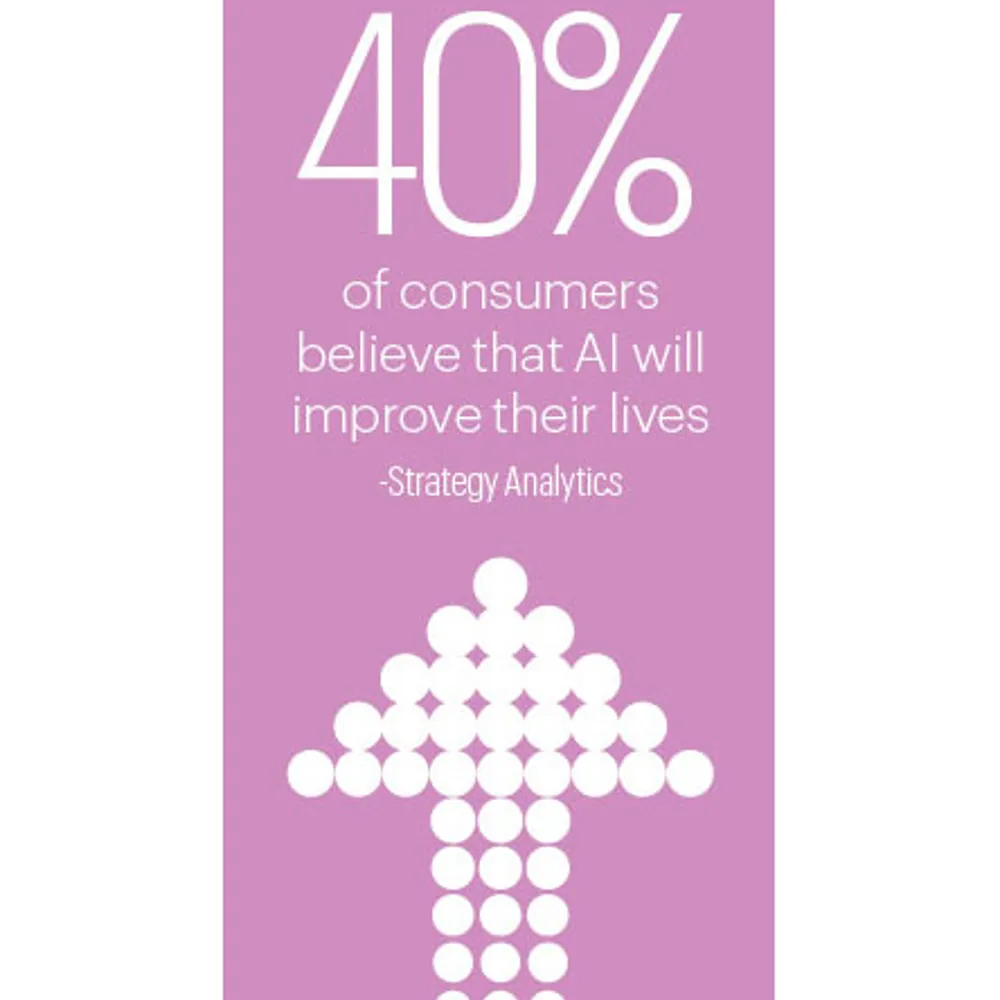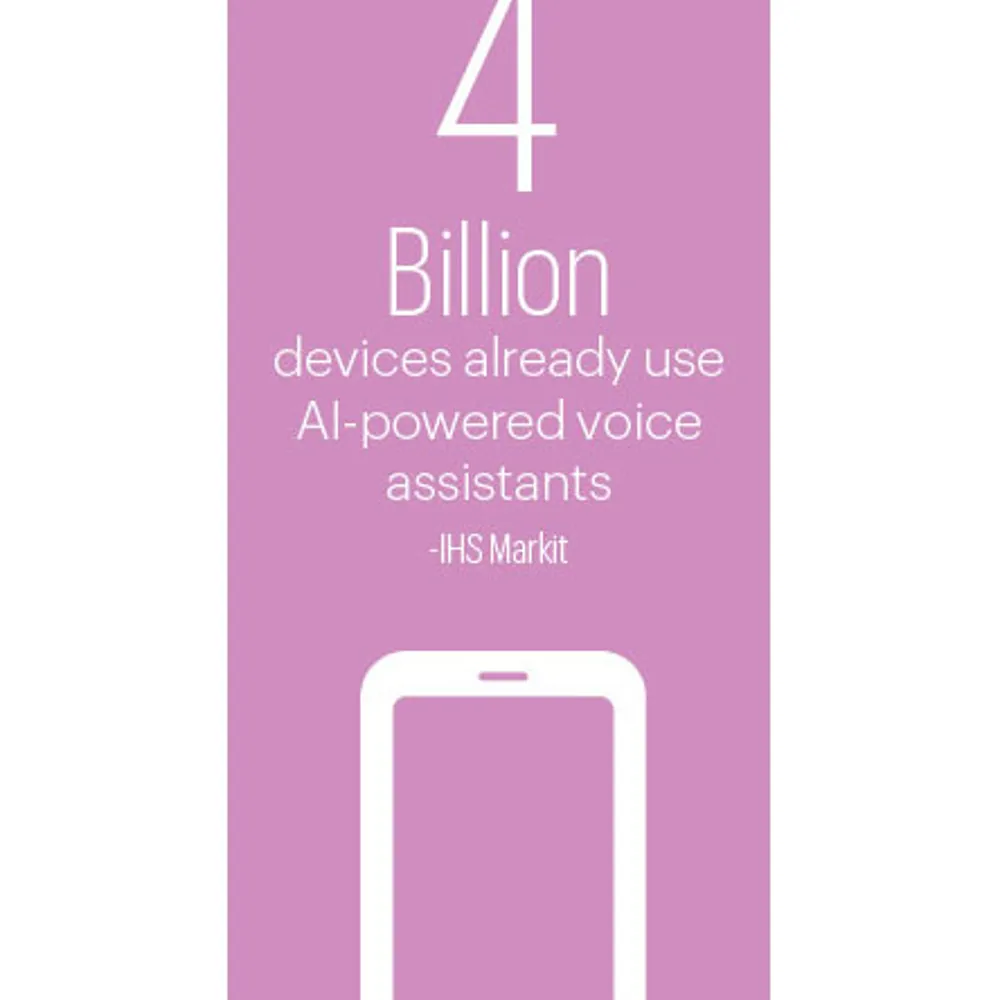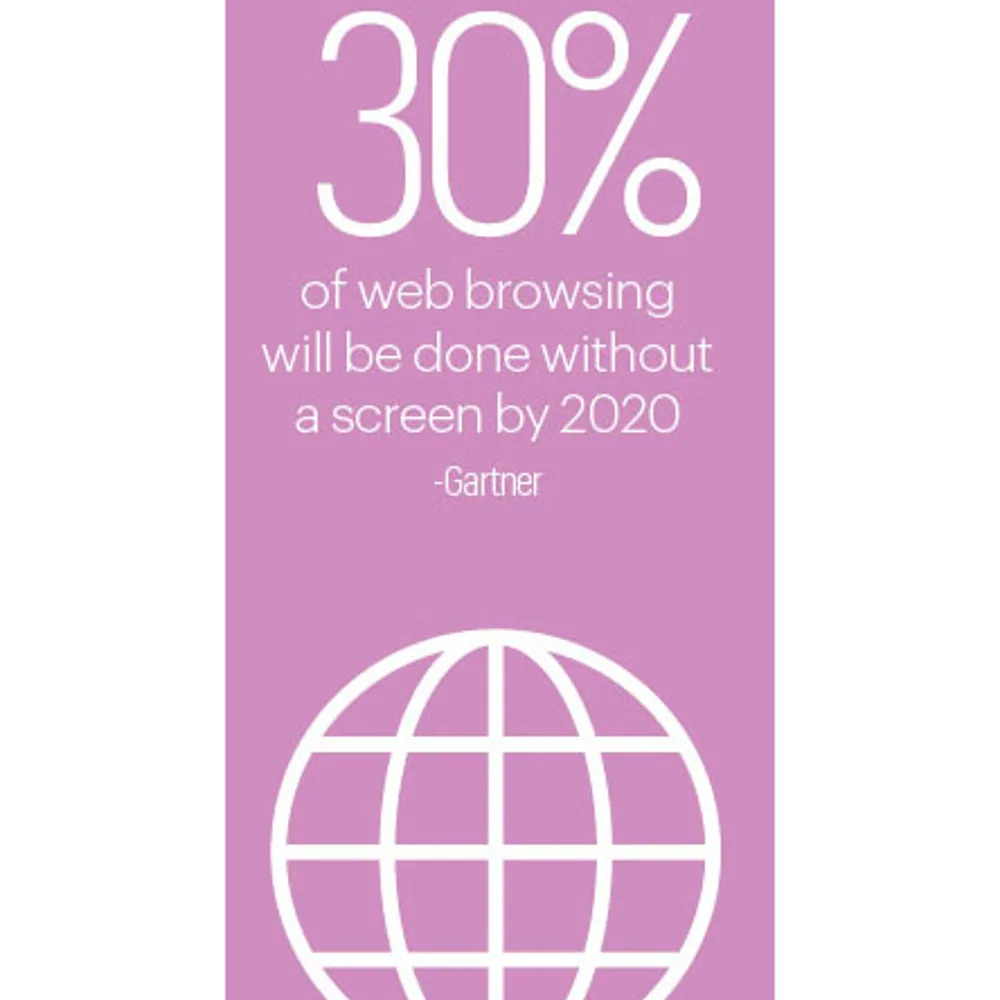The Power of AI
September 23, 2019


September/October 2019
More articles in this issue:
When Elon Musk said he wanted to implant chips in human brains to “achieve a symbiosis with artificial intelligence,” the soundbite caused both AI champions and critics to sit up and take notice. Would this be the next step toward computers taking over the human brain? Naturally, the conspiracy theories flourished. But in reality, Musk’s proposed Neuralink could help patients with serious brain injuries as early as next year.
“This is something most people don’t understand yet,” Musk said at the press event. Though he was referring to the brain chips themselves, he might as well have been describing the frontier of AI, a technological landscape that has already changed the way we live and work through everything from voice-assisted technology and chatbots to GPS mapping, e-tailing and beta tests of self-driving vehicles.
AI is on the tip of virtually every industry leader’s tongue. As such, cutting through the hype, misconceptions and smoldering fear of the unknown is critical if AI technology is going to flourish. Does this mean robots will be taking over? Or that autonomous vehicles are about to go rogue? Hardly.

AI’s greatest potential lies in the more subtle ways creators can harness its power to improve upon already established goals across a wide spectrum of industry. It’s the way someone consults with a therapist via smartphone or gets tested at a hospital for disease. It’s how we travel from one location to the next, make and ship products and even shop. It’s how we create art and music, and how we solve complex scientific puzzles that could treat the biggest threats to humanity like disease and climate change. Bottom line: If someone is using a smartphone, they are likely already using AI even if they don’t realize it yet.
Practical Apps and Ethics
“The use of technology doesn’t always catch up quickly with the mindset of society,” explains Kyle Martinowich, vice president of sales at Clarifai, an AI solutions company in New York City that specializes in computer vision and machine learning. Clarifai is essentially helping companies work through the digital transformation. It provides a glimpse into what the future of AI might realistically hold across many business segments, like creating computer vision models that ultimately augment human behavior, only in smarter, faster and far more accurate ways than we might imagine.
According to CTA’s research, AI is growing in several key areas: security, content creation and curation, health care, digital assistants, self-driving vehicles and law enforcement.
There’s a strong uptick, according to CTA, of AI-powered devices and services by consumers in the U.S. that range from mature applications that have existed for years — such as social networks, GPS navigation apps and smart email features — to next-generation products like smart speakers/digital assistants, wearables and recommendation engines. In fact, it’s predicted that as more smartphone owners upgrade to newer handsets, use of facial recognition-based security and camera/photo features will continue to gain traction despite concerns over privacy and bias issues.
But Martinowich says misinformation about facial recognition could prevent AI apps from moving forward in useful ways. “There is a rush to suppress facial recognition,” he says, though he believes there should actually be “a higher level of acceptance of it. We need to create laws and regulations,” adding that bias glitches can and should be rectified.
There’s a lot resting on AI’s success. According to Google research, for example, the technology is likely to help overcome many cognitive and physical challenges, as well as grow productivity by almost half. According to a recent report by PricewaterhouseCoopers, global GDP will also increase by as much as $15.7 trillion by 2030 thanks, in part, to advances in AI happening right now.

The Decade of AI
At Chatterblast, an online strategy and social media company in Philadelphia, AI tools have become an integral part of many client packages. “We’ve set up bots for quick customer service and sponsor giveaways for our live event and experiential clients,” says Giuseppe Mineo, Chatterblast’s ads and analytics manager. “These engagements are designed to promote fan engagement and leads for both the client and sponsors.”
Bots, or autonomous programs that can interact with computer systems or users, are becoming increasingly common for running automated tasks online. Typically, these bots perform tasks that are fairly simple and repetitive, but at a much faster pace than a human.
For Chatterblast’s purposes, the bots fulfilled expectations, “mainly due to keeping things simple and focusing on creating a strong user-experience,” says Mineo.
For one of his client’s events, for example, he prompted users to answer three questions for a chance to win tickets to an exclusive event. “Of the people that responded to our prompt, 49% answered all three questions and 28% clicked through to our client’s website. With these learnings, we used the data to inform creative decisions and conceptualize more engaging interactions for consumers in the following year.”
Mineo expects AI applications will continue to be used to deliver privacy-protected information about potential audiences, as well as insights into how content and advertising are ultimately being received by audiences. “AI is already extremely influential,” he says, “and the 2020s should be the decade it becomes more visible.”
In fact, according to Gartner, startups will actually surpass tech giants like Google, IBM and Microsoft, in driving the AI economy. That economy is expected to grow to $7.3 billion in overall global spending by 2022, reports Juniper Research.
The sheer rate of investment into AI is staggering. According to a MoneyTree Report by PwC, AI startups in the U.S. raised a record $9.33 billion in 2018, which is almost 10% of total venture capital investments from the year before.
The investment has led to marked advances. For example, AI is revolutionizing retail, and promises even greater transformations in health care and education that will aid with diagnoses and treatments, lesson plans and testing. In AI-driven automation, growth also means more intelligence from data via connected devices, social media and, well, the list is endless.
At Chatterblast, the increase in demand for AI-driven technology is palpable. “I’ve seen steady client interest growth in the past two years,” says Mineo, “with more trying to find out how they can grow their business without spending a ton on developing sales teams or adding administrative assistants. AI technology, like bots on social, voice assistants like Siri and Alexa, and insight machines like IBM’s Watson, can harness the infinitely growing pool of consumer data and help businesses of all sizes scale and succeed. Mom and Pop pizza shops can have people order food without lifting a finger. These frictionless enhancements are only limited by how much a business can dream.

Fundamental Shifts Across Industries
CTA recently launched its first AI standardization effort, exploring the definitions and characteristics of the technology by addressing the key concepts and terms (often misunderstood) associated with AI, including machine learning, natural language processing, model bias, trustworthiness and explainable AI. It may sound dry to the novice, but by outlining what the industry already knows about the technology, CTA has pinpointed a few areas that are expected to flourish, among consumers.
For example, in CTA’s AI Consumer Sentiments survey from 2018, U.S. consumers were asked to identify how they expect to use AI in the next few years. From smart home applications, such as real-time home security, to personal assistants making appointments and ordering groceries, it turns out that consumers hold high expectations for AI-fueled enhancements that can ultimately add convenience to their daily lives.
Kimberly Nevala, strategic advisor at SAS, a software and analytics provider in North Carolina, isn’t surprised. She predicts the next few years will set the pace for fundamental shifts in how we communicate and interact thanks to advances in AI.
“The foundation is being laid quickly and quietly in plain sight as deployment of natural language interfaces (chat bots, digital assistants and intelligent RPA) as the primary point of contact with customers becomes pervasive,” says Nevala.
From a practical perspective, some of the most important developments may be in computer vision and — for consumers — facial recognition technology (FRT) specifically. “AI is moving beyond basic object or image detection (i.e., “That is Kimberly”) to analyze sentiment and intent based on an object’s affect (posture, facial expression and movement). The benefits and risks inherent in such applications are huge,” she says.
But there are naturally plenty of fears and, frankly, misconceptions that plague AI’s growth spurt, even from inside the industry itself. “The biggest misconception still is that AI is intelligent,” says Navala. “AI’s dependence on data is both the greatest strength and weakness.”
For developers, these ethical hurdles are less about addressing specific problems, says Navala, and more about overcoming an over-reliance on the technology itself to detect and ameliorate bias or avert ethical quandaries.
In Forbes, Grant Freeland of Boston Consulting Group acknowledged that AI will only ever be as good as its human creators. “So, what do we know about AI? We know that AI algorithms — which are intended to trigger various responses by workers or machines — are created by humans, and are therefore subject to human error, bias, and a host of other potential flaws the techies would rather not talk about. AI is no more infallible than you or I.”
Indeed, technology — AI included — cannot independently decide what is right and wrong or assess broad, societal implications of AI applications. “Addressing these questions and determining what is right or fair in a given context,” says Navala, “requires a multi-disciplinary approach. Developing that collaborative network and practice will be a requisite part of working as an AI developer.”
One way these issues are being considered is at the government level. Earlier this year, for example, the White House issued an executive order aimed at maintaining American leadership in AI, which emphasizes the need to prepare the American workforce for jobs of the future as technology replaces humans and humans will need to train for other opportunities. CTA’s 21st Century Workforce Council is collaborating with tech companies to address the skills gap in the American workforce. The impact of AI on business, reports Accenture, is projected to increase labor productivity by 40% while enabling people to make better use of their time. It’ll also likely eliminate certain jobs.
And as for implanting chips in human brains, well, Musk says it’s just one way the technology can potentially enhance human life. “We cannot predict what we might achieve when this intelligence is magnified by the tools AI may provide,” he said in a letter, “but the eradication of disease and poverty are not unfathomable.”
Or as Andy Kessler put it in a Wall Street Journal column, “The future happens, just not the way most people think.''
Can Computers Outperform Doctors? Of Course!
Three years ago, an article in the New England Journal of Medicine predicted that machine learning would eventually replace the work of certain medical professionals because it “will soon exceed human accuracy.” The proposal was among the earliest to suggest that AI-powered technology could realistically change the way we think about health care and its specialists — namely radiologists.
In a study published by Nature Medicine in May, a Google algorithm outperformed six radiologists who were looking for signs of lung cancer. The algorithm used more than 42,000 scans from a clinical trial to detect 5% more cancer missed by humans. The technology also reduced false positives — a common problem when scanning for lung cancer — by 11%.
What makes the technology so promising in medicine specifically is AI’s ability to identify patterns and anomalies faster and more accurately than a human. If you consider the number of scans that must be reviewed each day in a big city hospital, for example, the outcomes can add up quickly.
Plus, AI-aided technology isn’t limited to cancer screenings by any means. It’s already being used to detect everything from genetic diseases in children to neurodegenerative and rare hereditary diseases. And just last year, the FDA approved OsteoDetect, an AI tool from Imagen in New York City that can help detect fractures. We’re also likely to see more from Aidoc, a company in Israel that’s creating solutions to detect spinal injuries sooner. AI is just on the cusp of massively improving our world.
Join our community of innovators and shape the future of technology.



